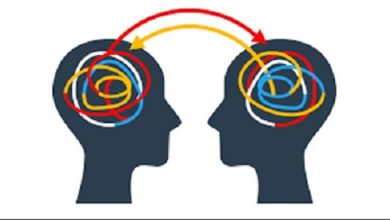Advantages of digital education/origin/importance/importance
What Is Digital Education?
Digital education is the practice of using technological means in teaching methods , often combined with the adoption of more dynamic learning processes . In this article we will describe you the advantages of digital education.
It is important to point out from the outset that there is no digital education model or a set of pillars and characteristics that allow a more detailed definition.
After all, the universe of technology is very complex and changes too much.
New developments emerge so frequently and the possibilities are so diverse that it is impossible to establish a basis for generating a common approach that serves as a reference.
It is up to educators and educational institutions to find the formula they believe to be the most adequate to promote quality education , taking advantage of all the benefits of technological solutions.
In fact, the current scenario offers the opportunity for other agents to act as promoters of digital education.
In a connected world, with shorter distances, technology companies and non-profit entities develop interesting education tools that are of great influence among students and educators.
A good example is the thousands of applications for mobile devices that work as platforms for learning and disseminating knowledge.
Some of them have a for- profit business model and others only have the purpose of collaborating with the development of digital education.
How Did Digital Education Come About?
Just as it is difficult to come up with a definition that is not too generic for digital education, it is difficult to structure a formal timeline or, even worse, a starting point.
Because digital education is a process that is still in progress and that has always walked along with the digitization of communication, information and behavior.
The possibilities of this universe are as great as the creativity of those who develop technological solutions and think about their practical applications in our daily lives.
Despite this, we can safely say that the beginning of the 2000s was when digital education began to take off until it reached the effervescence of digital solutions and approaches that we have today.
The internet became faster and its access, unlimited.
To connect to the network, it was no longer necessary to occupy the phone signal, a major obstacle for users.
In schools and other educational institutions, teachers quickly noticed the change in some learning processes.
Wikipedia became popular and began to replace consultations with library books and printed encyclopedias as a source of information for homework.
Digital channels continued to evolve. Today, apps, Youtube channels, blogs and even social networks are sources of information.
Along with all this, there are software that facilitate real-time communication by text, audio or image between distant people, eliminating the need to be side by side to transmit knowledge .
When these tools are well used for this purpose, they integrate the universe of digital education.
Importanace
Digital education is important not only to promote more engaged teaching , as we have just explained in the previous topic.
But also because it is a reality that encourages the democratization of access to information, as it demands fewer resources and does not recognize distances as obstacles.
Today, it is possible to learn about virtually any subject in the comfort of home, whenever and however it is convenient for the student.
Someone who lives in the countryside, for example, today can, thanks to the growing offer of distance learning courses , obtain a degree from a recognized university.
This type of teaching has already been frowned upon by more conservative people, as if it were a less serious modality than face-to-face education.
When there is student commitment , good planning and organization of lessons, and an intelligent use of available technological solutions, however, the results achieved are undeniable.
Therefore, it is also important to discuss digital education. Understand it as a continuous and joint construction.
After all, there is also a downside to the world of information available on the web. There is a lot of lies, misinformation, offensive or poor quality content.
It is important to teach young people from an early age to filter information and take advantage of hyperconnectivity in the best possible way to develop their abilities.
Advantages of Digital Education
Below are the advantages of digital education.
- Individualized Learning Experiences – A major drawback of the traditional education system is that many students experience a lack of interest when they are unable to catch up with the rest of the class. The contemporary digital format allows teachers to customize study material based on the speed and ability of each person to learn.
- Newly Competent Learners: When exposed to new learning tools and technology, learners tend to develop effective self-directed learning skills. A digital education system allows students to develop new skills related to analyzing what they need to know in order to find and use online resources.
- Unlimited information: with the emergence and consolidation of the internet, it has become possible for students to have access to a wide variety of information available online. Previously, students relied on limited information sources, but now, thanks to the growing popularity of digital education systems, the unavailability of required information is no longer a barrier in the pursuit of knowledge.
- Smart classrooms: the chalk and talk method is not the only alternative as teachers are using alternative methods supported by technology to help their students understand that learning can be innovative and fun. Modern classrooms are equipped with a television or projector that makes it easy to switch from a regular class session to an interactive digital session. This can make students pay more attention as they are very familiar with the digital world.
- Digital Update: In a world that is constantly evolving in terms of technology, practices and information can easily become outdated as there is always something new happening. Providing students with up-to-date information is no longer a matter of choice, but a mandatory process. Students tend to spend most of their time on phones and laptops, so technology use is more common for them.
- High-engagement learning: the traditional education system tends to manifest a punctual scope since it is based on limited elements such as textbooks, the teacher and handwritten notes, while a digitized education system offers a wide range of options for to learn. The availability of resources makes each session innovative and attractive. Interactive and game-based learning sessions usually get more student engagement.
- Ease of sharing: The traditional education system would rely heavily on students keeping notebooks with handwritten notes containing information provided by their teachers in the classroom or acquired through extensive research in the library, but a system In digital education, information can be preserved and shared quickly, saving students a lot of time and physical work.
- Accountability for students: the digital education system incorporates real-time evaluation and performance reports generated by learning management systems, which increases the transparency of the evaluation. It allows students to analyze their performance and find the necessary solutions on their own. The digital education system promotes people to be independent thinkers who know what to study, when to study, and how to study.
We hope you have learned about the advantages of digital education.




